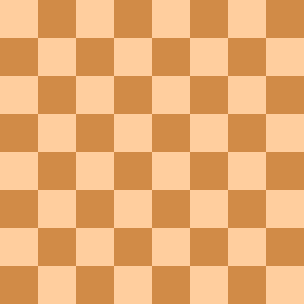Italian Game, Blackburne Shilling Gambit
| |||||||||||||||||||||||||||||||||||||||||||||
| Moves | 1.e4 e5 2.Nf3 Nc6 3.Bc4 Nd4 | ||||||||||||||||||||||||||||||||||||||||||||
|---|---|---|---|---|---|---|---|---|---|---|---|---|---|---|---|---|---|---|---|---|---|---|---|---|---|---|---|---|---|---|---|---|---|---|---|---|---|---|---|---|---|---|---|---|---|
| ECO | C50 | ||||||||||||||||||||||||||||||||||||||||||||
| Origin | Wilhelm Steinitz, The Modern Chess Instructor, Part II, 1895 | ||||||||||||||||||||||||||||||||||||||||||||
| Named after | Legend on Blackburne (see text) | ||||||||||||||||||||||||||||||||||||||||||||
| Parent | Italian Game | ||||||||||||||||||||||||||||||||||||||||||||
| Synonym(s) | Kostić Gambit | ||||||||||||||||||||||||||||||||||||||||||||
The Blackburne Shilling Gambit is the name facetiously given to a dubious chess opening, derived from an offshoot of the Italian Game, that begins:
It is also sometimes referred to as the Kostić Gambit after the Serbian grandmaster Borislav Kostić, who played it in the early 20th century.[1]
History
Wilhelm Steinitz made the first known mention of this line, noting it in 1895 in the Addenda to his Modern Chess Instructor, Part II.[2] The earliest game with the opening on chessgames.com, Dunlop–Hicks, New Zealand Championship, dates from 1911.[3] Another early game, mentioned by Bill Wall, is Muhlock–Kostić, Cologne, 1912.[1][4]
Analysis
Black's third move is, objectively speaking, a weak, time-wasting move. Steinitz recommended 4.0-0 or 4.Nxd4 in response.[2] International Master Jeremy Silman writes that White has an advantage after 4.0-0, 4.c3, or 4.Nc3. He recommends as best 4.Nxd4! exd4 5.c3 d5 6.exd5 Qe7+ 7.Kf1 +/=, when 5...Bc5? loses a pawn to 6.Bxf7+! Kxf7 7.Qh5+.[5]
The only virtue of 3...Nd4 is that it sets a trap that has ensnared many players. After the natural 4.Nxe5!?, Black wins material with 4...Qg5! Now the obvious 5.Nxf7?? loses to 5...Qxg2 6.Rf1 Qxe4+ 7.Be2 Nf3#, a smothered mate. This trap is what gives the line its name; the great English master Joseph Henry Blackburne reputedly used it to win shillings from amateurs.[1] However, Wall has questioned this, stating that there are no recorded games of Blackburne with the opening.[1]
The opening is not a true gambit, since White cannot take the pawn on e5 without losing material. However, after 4.Nxe5 Qg5, White can maintain a playable game with 5.Bxf7+! Steinitz wrote that this move, "followed by castling, is now White's best chance and in some measure a promising one, considering that he has two Pawns and the attack for the piece".[2] After 5...Ke7? (5...Kd8!? 6.0-0 [6.Ng4? Nh6!−+] +/=) 6.0-0 Qxe5 7.Bxg8 (7.Bc4 is also possible) Rxg8 8.c3 Nc6 (8...Ne6 9.d4! Qxe4? 10.d5 Nf4?? 11.Re1 pins Black's queen against his king and wins; Silman analyzes 9...Qf6 10.f4 when "[w]ith two pawns and an attack for the sacrificed piece, White’s compensation isn’t in doubt".[5]) 9.d4, White's two extra pawns, strong center, and lead in development, combined with Black's awkwardly placed king, give White strong compensation for the sacrificed knight. G. Chandler–NN, Stockbridge 1983, concluded 9...Qa5? (9...Qf6 10.e5 Qf7 may be best) 10.d5 Ne5? 11.Qh5! Nf7? (11...d6 12.Bg5+ Kd7 13.Qxh7 also wins for White) 12.d6+! 1–0 (in light of 13.Qxa5).
Graham Burgess writes that 3...Nd4 is also known as the "Oh my God!" trap, as for full effect, Black is supposed to make this exclamation, pretending to have accidentally blundered the e-pawn. Burgess condemns this behavior as unethical, and notes that the trap, if avoided, leaves White with a large advantage.[6]
See also
References
- 1 2 3 4 Bill Wall (2005), The Blackburne Shilling Gambit
- 1 2 3 Wilhelm Steinitz, The Modern Chess Instructor, Edition Olms Zürich, 1990 (reprint), p. 63 of Part II. ISBN 3-283-00111-1.
- ↑ Dunlop–Hicks, New Zealand Championship 1911.
- ↑ Muhlock–Kostić, Köln 1912
- 1 2 Jeremy Silman (2004), Two Wild Black Systems
- ↑ Graham Burgess, The Mammoth Book of Chess, Carroll & Graf, 1997, pp. 122–23. ISBN 0-7867-0725-9.
External links
| The Wikibook Chess Opening Theory has a page on the topic of: Blackburne Shilling Gambit |
